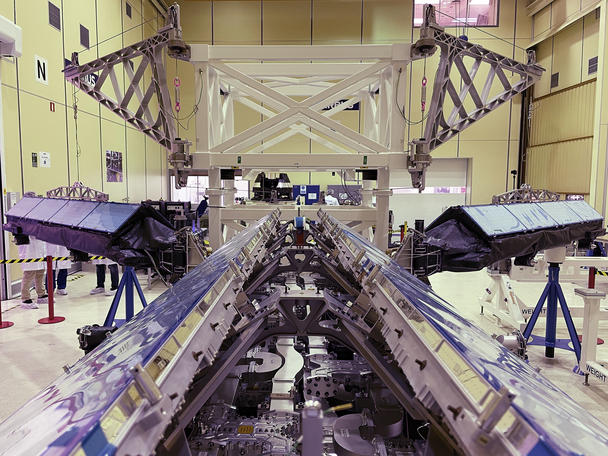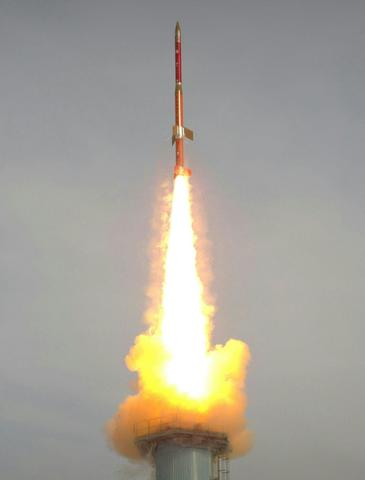MetOp-SG-B weather satellite: Scatterometer flies through tests

Scatterometers play a central role in monitoring climate change
Next generation weather satellite set to improve regional & global forecasting
Madrid, 6 April, 2022 – The flight model of the Scatterometer Antenna Subsystem (SAS) of the MetOp Second Generation meteorological satellites has been officially delivered after four months of extensive testing at the Airbus facility in Madrid. It will now be transferred to Airbus in Friedrichshafen (Germany) where it will be integrated into the satellite along with the other instruments.
The SAS protoflight model underwent a lengthy test campaign where it was subjected to the extreme conditions that it will encounter during launch and in-orbit operation. These tests included: antenna deployment, thermal cycling, mechanical vibrations and acoustic environment.
"It is for us a very important milestone as it is a three-antenna system with a very complex in-orbit deployment," said Luis Guerra, Head of Airbus Space Systems Spain. "The MetOp-SG SAT-B meteorological satellites will rely on two key instruments with major contribution from Airbus in Spain to carry out their mission: the Scatterometer (SCA) with the Antenna Subsystem (SAS) and the Ice Cloud Imager (ICI)."
The SCA with its major subsystem SAS is one of five instruments on board MetOp-SG SAT-B and will provide double the resolution of the first generation MetOp satellites. It will measure wind speed and direction over the ocean surface, to help monitor scale phenomena such as ocean winds and continental ice sheets, and check land surface soil moisture – a key driver of water and heat fluxes between the ground and the atmosphere. It is expected to cover 99% of the Earth's surface within a period of 2 days and with a resolution of 25 kilometres.
Data provided by scatterometers has been used for over 30 years, since ERS-1 and 2, for weather and wave forecasting. More recently, with MetOp satellites, it has been used to study unusual weather phenomena such as El Niño, the long-term effects of deforestation and changes in sea-ice masses around the poles. All of which play a central role in monitoring climate change.
The MetOp-SG SAT-B series of satellites focus on the use of microwave sensors that will provide: enhanced infrared, microwave and radio occultation temperature and humidity soundings; polar atmospheric motion vectors extracted from optical images; new precipitation and cloud measurements from images in the optical, submillimetre and microwave spectra; and high-resolution measurements of ocean surface wind vector and soil moisture extracted from scatterometer observations. These data will help improve numerical weather prediction - the backbone of our daily weather forecasts - regionally and globally.
The first launch of the MetOp-SG mission is scheduled for 2024 after completion of integration and satellite level testing. The nominal operational lifetime of each of the three MetOp-SG satellites is 7.5 years, ensuring full operational coverage over a 21-year period.
@AirbusSpace @EUMETSAT @ESA_EO #MetOpSG #SpaceMatters #NextSpace
Your contact
Ralph Heinrich
Head of External Communications - Airbus Space Systems
Jeremy Close
External Communications - Airbus Space Systems, UK
Francisco Lechón
External Communications - Airbus Space Systems, Spain
Guilhem Boltz
External Communications - Airbus Space Systems, France
Mathias Pikelj
Communications - Airbus Defence & Space



